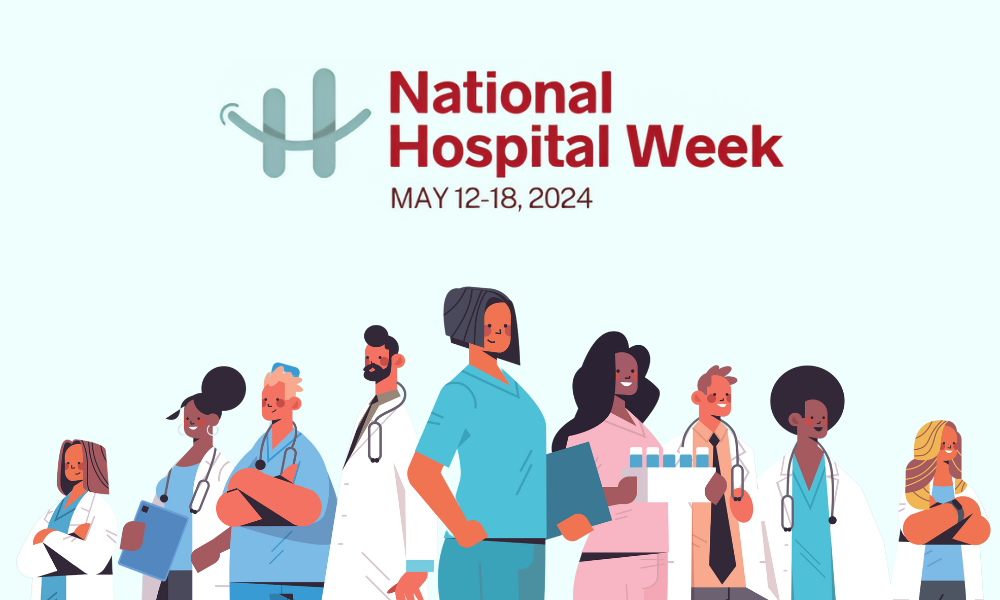Ten years ago, it was a major hassle for a physician to become licensed in multiple states. For the most part, if a physician or their spouse needed to move to a different state to care for a family member, the doctor wouldn’t be able to practice medicine right away unless they held a license in that state.
Obtaining a medical license takes a not-insignificant amount of time. The American Medical Association says to allow at least two months from the time you apply for licensure to the time you get approval. Worse, it ain’t cheap — currently, a license application costs roughly $537 on average.
That was before the Interstate Medical Licensure Compact came to fruition in 2014.
![]() Locumpedia has written before about the IMLC, but we’ve only scratched the surface of what this Compact is, what it does, and how it plays into the locum tenens staffing industry. We wanted to help demystify the IMLC for staffing agencies, so we went straight to the source – IMLC Commission Executive Director Marschall Smith, who has served this role since the Compact’s inception.
Locumpedia has written before about the IMLC, but we’ve only scratched the surface of what this Compact is, what it does, and how it plays into the locum tenens staffing industry. We wanted to help demystify the IMLC for staffing agencies, so we went straight to the source – IMLC Commission Executive Director Marschall Smith, who has served this role since the Compact’s inception.
Smith spoke at length about the early frustrations shared by physicians who applied for multiple state licenses before the IMLC.
“Pre-Compact, if you wanted to apply in multiple states, you would pay your licensing fee, the board received and processed your information, and it could be 3, 6, or 9 months before you got your license,” says Smith. “Physicians couldn’t put together their practice or open an office because there was a lot of uncertainty and potential for delays.”
Smith says the delay was a long-simmering issue for physicians around the country. Federation of State Medical Board (FSMB) members endlessly discussed ways to expedite licenses. Smith says proponents wanted to create a national physician license to remove state control over licensure, but that led to debates on whether or not such a move was constitutional. A national license would likely require a new federal medical agency, which would be costly and even more time-consuming to form.
In 2013, the FSMB proposed that the right to issue licenses could still be reserved to the state, but the FSMB agreed to make obtaining a medical license easier for physicians.
The medical boards came together and said, ‘Let’s come up with some common criteria for physicians that can be verified by another board, and then not do the traditional licensure process,’” Smith says. “A lot of what had to be processed before were school transcripts, certified copies of a medical school diploma, training certificates, and things that have to be collected from an individual specific source. We thought we could speed up this process once the physician was pre-qualified.”
These meetings laid the groundwork for the early iterations of the Compact. With assistance from the FSMB, a group of state medical board executives and attorneys drafted a model Compact. The Compact, introduced in the fall of 2014, featured an ironclad set of criteria to qualify a physician and pass the info along to other states so that state medical boards would have no reason to hamper the review process. It took several years to circulate the Compact and shape it into what it is today, but in 2017, state Legislatures began adopting the agreement, which gave it liftoff.
“Now, after a physician requests a license through the IMLC and then passes the pre-qualification stage, they can get a license back in seven to 10 days,” Smith says.
A Streamlined Pathway to Licensure
We’ve all heard about physician shortages and the looming public health crisis if nothing is done to address it meaningfully and soon. Demand for physicians is far outpacing supply, and the industry is staring at a potential shortage of up to 124,000 physicians by 2034. However, this shortage of docs isn’t something new or even that uncommon.
Shortages in rural or urban areas with poor access to healthcare have been common for decades — this was the impetus for the locum tenens staffing model in the late 1970s. For over 40 years, sending temporary doctors to communities facing staffing shortages has been a lifesaver. Early temporary physicians stepped in to serve rural communities with no provider or were understaffed and unprepared to handle even the smallest patient surge.
For most of the locum tenens industry span, doctors faced significant hurdles when looking to practice anywhere outside of their State of Principal License (SPL), which is the state where a physician holds a full and unrestricted medical license. State medical boards previously held all the cards when setting their licensing criteria, reviewing qualifications, and processing applications, allowing doctors to practice in multiple states.
Smith of the IMLC says, “We always felt like this was something we could do better, more effectively, and faster. That premise turned out to be very true.”
The IMLC created the expedited pathway to medical licensure, streamlining the process by letting physicians complete an application and receive a formal Letter of Qualification from their SPL, verifying that they meet the Compact’s eligibility requirements.
After verifying each physician’s eligibility, the IMLC sends it to additional states. This seemingly small act of information sharing cuts time out of the process.
“We knew that if we do this, we had to be able to qualify all of these physicians,” Smith says. “We wanted to set a high bar of standards, and if they can’t meet those standards, they couldn’t get approved for the license.”
Now, to receive licensure through the Compact, a physician must hold a full, unrestricted medical license in an SPL that’s a member of one of the 39 states — plus Guam and Washington D.C. — that signed the Compact. According to the IMLC Commission, to declare a state involved in the Compact as your SPL, only one of the following criteria needs to be met:
- The state is the physician’s primary residence.
- At least a quarter of the physician’s practice occurs there.
- The physician is employed by a practice in the state.
- The SPL is used as a residence for federal income tax purposes.
After the Compact’s formation, Smith says 20 states — Minnesota, Nebraska, Mississippi, and Alabama, to name a few — immediately signed on. Physicians immediately bought into the idea, too.
“Pre-Compact, there was this idea that you’d only ever get a license in one state, and it was an anomaly of a physician getting licensed in multiple states,” Smith says. “But we know that’s not true now, and we really learned that fact during COVID.”
The IMLC Commission found themselves in a unique situation at the onset of the pandemic. The IMLC could expedite state licenses and deploy physicians into areas stretched thin and lacking resources.
“There are flashy situations where hospitals in rural areas are going to close,” Smith says. “What states that were part of the Compact did was use us to help them ramp up their staff with locum tenens physicians to make sure they never missed a day.”
Barriers, Lack of Education Prevent Full Adoption
While popular, some states still aren’t members of the Compact and have valid reasons why they might be against signing the agreement. Critics who were outspoken against the IMLC were worried that it still didn’t do enough to make licenses portable or affordable for physicians.
The IMLC doesn’t address the cost barrier, which we mentioned is the first and largest frustration associated with obtaining multiple licenses. Physicians still pay for state licensing and other fees to renew that license, meaning it’s still cost-prohibitive for physicians. Under the Compact, if a doctor applies for licensure, there’s a non-refundable application fee of $700, whether or not you meet the qualifications.
Opponents of the Compact felt the IMLC should have done more to address affordability.
“This is one of the frustrations of having multiple state licenses,” says Smith. “The cost of obtaining a full and unrestricted license is, we found, about $537 to complete on average. That’s the traditional application to get transcripts, the fingerprints done, the whole process of applying to a state.”
But Smith says it’s still “more economical” to apply through the Compact regardless of the cost now because doctors can get to work much faster. Still, it’s something new physicians carrying around tremendous debt would need to consider before applying.
“The biggest issue is the cost involved, and we’ve addressed that as much as we can,” Smith says. “States have already reduced costs, and that’s helped increase the number of people who apply.”
Arguments against the IMLC have said that independent companies might be able to reduce that $700 fee and offer “a competitively priced solution to help physicians apply for state licenses and potentially replace the more expensive federally subsidized IMLC.”
Licenses Lack Portability
The IMLC also didn’t do much to address portability, allowing a license to be active anywhere. For comparison, suppose a person with a valid Georgia state driver’s license gets in their car and takes Interstate 20 into Alabama on a day trip.
In that case, their driver’s license doesn’t suddenly become invalid when they cross the state border. There is a general agreement between the two states that if the driver passes the test, pays the fee in the state where it was issued, and secures all of the requirements to operate a vehicle, they can do so anywhere in the country. This scenario falls under the “full faith and credit” clause of the US Constitution.
However, this doesn’t apply to most professional licenses, including medical licenses. Even though a doctor’s approach to medicine doesn’t change when they cross from one state to the next, and even though they’ve met the requirements, there is yet another barrier to entry.
In an article published in mHealth Intelligence on March 16, 2018, the late Shirley Svorny, former professor of economics at California State University in Northridge and an adjunct scholar at the Cato Institute, debated Smith about the “pros and cons of” the IMLC, specifically its impact on telehealth.
One of Svorney’s concerns over the IMLC was that the Compact didn’t do enough to ensure portability. The licenses lack true portability, she said, because physicians who obtain a license in an IMLC state still have to adhere to “a variety of state-specific medical practice regulations.”
Svorney said she was concerned it would negatively affect telemedicine patients by reducing their access because doctors couldn’t easily practice across states. She said the IMLC gave the appearance that it was doing much more for physicians than it could do in reality.
But Smith refutes this, saying the IMLC was only ever a “voluntary resource for physicians that expedites the licensing process.” It never claimed to address the cost or offer total portability. Also, it is not the only option physicians have for applying for multiple licenses.
Even with these hang-ups, the IMLC effectively achieves its mission. An October report from the IMLC showed that of the participating states, “31% of the initial licenses reported” came via the IMLC pathway. The FSMB says that about 24% of the nation’s physicians hold two or more licenses.
“We used to dream about processing 75 applications a month, and as of 2023, we’re having over 2,000 applications a week,” Smith says. “More than 75,000 licenses have been issued to more than 16,000 physicians through our process. This is one of these concepts that has turned out to be applicable, safe, and effective.”
‘The Opposition Isn’t Really Even An Opposition’
Smith says that any opposition from non-member states isn’t because of something lacking from the Compact. He says generally, after meeting with legislators, these lawmakers are open to the concept and the idea of signing on to participate in the Compact.
“The opposition isn’t even an opposition,” he says. “It’s a lack of will. The process must be introduced into legislation and signed into law by the government. We can’t lobby or advocate that bills go through the states. They have to be done organically.
“Some large states haven’t been added to the Compact, but that’s really because there’s nobody with a loud enough voice willing to put the bill forward.”
In July 2023, Hawaii and Missouri joined the Compact, and Smith says the IMLC is trying to ride the momentum and eventually get bills sponsored in other states, such as Massachusetts and New York. He says the IMLC Commission works daily to educate people about the benefits of the Compact.
Smith reported in a fall newsletter that the Commission is also fully staffed with 12 full-time positions and one part-time position, including a team of customer service representatives available weekdays from 8 a.m. EST to 5 PST to answer inquiries and assist with applications. The Commission also actively participates in lunch and learn-style meetings where they meet with legislators to answer questions about the IMLC.
“The Wednesday after Labor Day, we did a legislative work session,” Smith says. “Through phone interactions and meetings set up, we provided legislators with copies of the information about the IMLC. Having maturity now as an organization, we’re able to put data together for them, and we’re able to help legislators a lot, too.”
IMLC and Locum Tenens
Smith says the success locum tenens providers and staffing agencies had during the COVID pandemic to license and credential physicians for facility vacancies helps his team sell the great benefits of the Compact with state lawmakers.
The IMLC has already made things easier for locums agencies to license physicians quickly, and the more buy-in he can get from the remaining states, the greater the impact can be on the healthcare industry as a whole.
“The locums companies as a group really stepped up and helped address the challenge,” Smith says. “Locum tenens docs who were licensed through the IMLC took care of what was a horrible situation, but they were successful because all the right pieces had already been put into place.”








